Page 105 of 179

10 4
Disc brakes furnish optimum decelera-
tion and braking control as well as
greater fade resistance under heavy
use.
Limited vehicle use, extended periods
with the car parked or in storage and
light loading will increase the tendency
for corrosion to form on the rotors, and
dirt to accumulate on the pads. This
happens because the minimum pres-
sure between the pad and the disc
required for the self-cleaning function
of the disc brakes is not achieved.
If the brake rotors are corroded, they
will tend to respond to braking with a
pulsating effect which even extended
application will fail to cure.
a
Use only original BMW-approved
brake pads, as otherwise vehicle autho-
rization is no longer valid.c
Driving notes While driving in wet conditions and in
heavy rain, it is a good idea to apply
light pressure to the brake pedal every
few miles - Watch traffic conditions to
ensure that this maneuver does not
endanger other road users. The heat
generated in this braking process helps
dry the brake pads and rotors.
Maximum braking force is obtained
while the wheels continue to rotate,
peaking when the wheels remain on the
verge of locking without actually doing
so. ABS maintains this state automati-
cally. If the ABS fails, you should revert
to the staggered braking technique
described above (refer to page 106).
Extended or steep mountain descents
do not necessarily have to lead to
reduced braking efficiency; downshift
to a gear in which only minimal periodic
brake applications are required (you
can move the selector lever to the
appropriate lower range if your car is
equipped with an automatic transmis-
sion).
You can further increase the engine's
braking effect by selecting a lower gear,
downshifting as far as first gear or plac-
ing the selector lever in position 1 (2).Should engine braking prove inade-
quate, you should still avoid extended,
continuous braking. Instead of main-
taining low to moderate pressure over
an extended period of time, you should
decelerate the vehicle by applying more
substantial force at the pedal (watch for
following traffic!) and then pausing
before repeating the application. This
staggered braking technique allows the
brakes to cool in the intervals between
active braking phases, preventing over-
heating and ensuring that full braking
capacity remains available at all times.
a
Do not allow the vehicle to coast by
pressing down the clutch pedal or shift-
ing into neutral while underway. Never
drive with the engine switched
off (!). The engine provides no braking
effect when the clutch is disengaged or
the transmission is in neutral, and there
is no power-assist for brakes and steer-
ing when the engine is not running.
Never allow floor mats, carpets or other
objects to protrude into the area around
the accelerator, clutch and brake pedals
and obstruct their movement.c
Disc brakes
Page 106 of 179
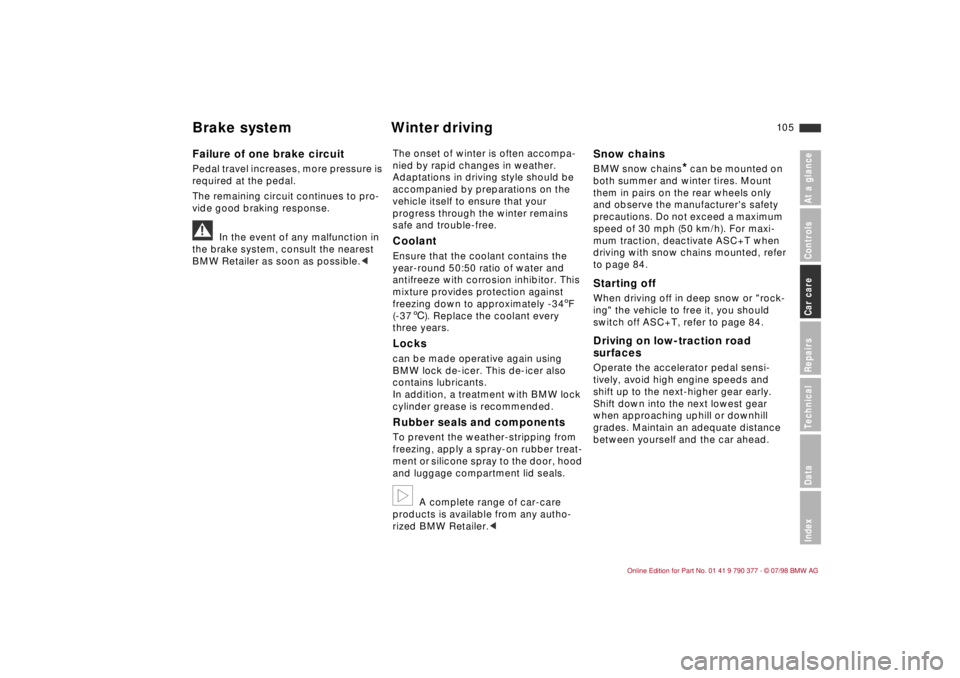
10 5
At a glanceControlsCar careRepairsTechnicalDataIndex
Failure of one brake circuitPedal travel increases, more pressure is
required at the pedal.
The remaining circuit continues to pro-
vide good braking response.a
In the event of any malfunction in
the brake system, consult the nearest
BMW Retailer as soon as possible.cThe onset of winter is often accompa-
nied by rapid changes in weather.
Adaptations in driving style should be
accompanied by preparations on the
vehicle itself to ensure that your
progress through the winter remains
safe and trouble-free.
CoolantEnsure that the coolant contains the
year-round 50:50 ratio of water and
antifreeze with corrosion inhibitor. This
mixture provides protection against
freezing down to approximately -345F
(-376). Replace the coolant every
three years.Lockscan be made operative again using
BMW lock de-icer. This de-icer also
contains lubricants.
In addition, a treatment with BMW lock
cylinder grease is recommended.Rubber seals and components To prevent the weather-stripping from
freezing, apply a spray-on rubber treat-
ment or silicone spray to the door, hood
and luggage compartment lid seals.b
A complete range of car-care
products is available from any autho-
rized BMW Retailer.c
Snow chainsBMW snow chains
* can be mounted on
both summer and winter tires. Mount
them in pairs on the rear wheels only
and observe the manufacturer's safety
precautions. Do not exceed a maximum
speed of 30 mph (50 km/h). For maxi-
mum traction, deactivate ASC+T when
driving with snow chains mounted, refer
to page 84.
Starting offWhen driving off in deep snow or "rock-
ing" the vehicle to free it, you should
switch off ASC+T, refer to page 84. Driving on low-traction road
surfacesOperate the accelerator pedal sensi-
tively, avoid high engine speeds and
shift up to the next-higher gear early.
Shift down into the next lowest gear
when approaching uphill or downhill
grades. Maintain an adequate distance
between yourself and the car ahead.
Brake system Winter driving
Page 107 of 179

10 6
BrakesWinter road conditions substantially
reduce the amount of traction available
between the tires and the road surface;
the resulting - considerable - increases
in braking distance should be continu-
ally borne in mind.
ABS is intended to prevent the wheels
from locking under braking; to help the
vehicle to remain stable and sensitive to
steering. Should the ABS fail, with lock-
ing wheels as a result: Reduce the
pressure on the brake pedal until the
wheels just start to roll again while still
maintaining enough force to continue
braking. Then increase the pressure,
release the pressure when the wheels
lock, reapply pressure, etc.
This staggered braking procedure will
reduce stopping distances while help-
ing you maintain steering control.
It can allow you to steer around hazards
once you have reduced the pressure on
the brake pedal.
a
Never downshift to exploit engine
braking when driving on slippery road
surfaces; it could lead to loss of rear-
wheel traction and endanger vehicle
control. ABS and ASC+T can not protect
against such loss of traction, since they
have no effect on this kind of decelera-
tion.c
b
Disengage the clutch during hard
braking on road surfaces affording only
poor or uneven traction.c
Loss of lateral traction (sliding)Release the accelerator pedal and
depress the clutch pedal or push the
selector lever to position N with auto-
matic transmission. Countersteer care-
fully and attempt to regain control of the
vehicle.
ParkingSelect 1st or reverse gear. If your car is
equipped with an automatic transmis-
sion, select Park. Engage the parking
brake when parking on hills and
inclined surfaces. To prevent frost and
corrosion from locking the parking
brake liners at the drum, you can dry
them by gently pulling up the lever
while stopping (ensure that you do not
endanger following traffic).a
The brake lamps do not light up
when the parking brake is applied.c
Winter driving
Page 108 of 179
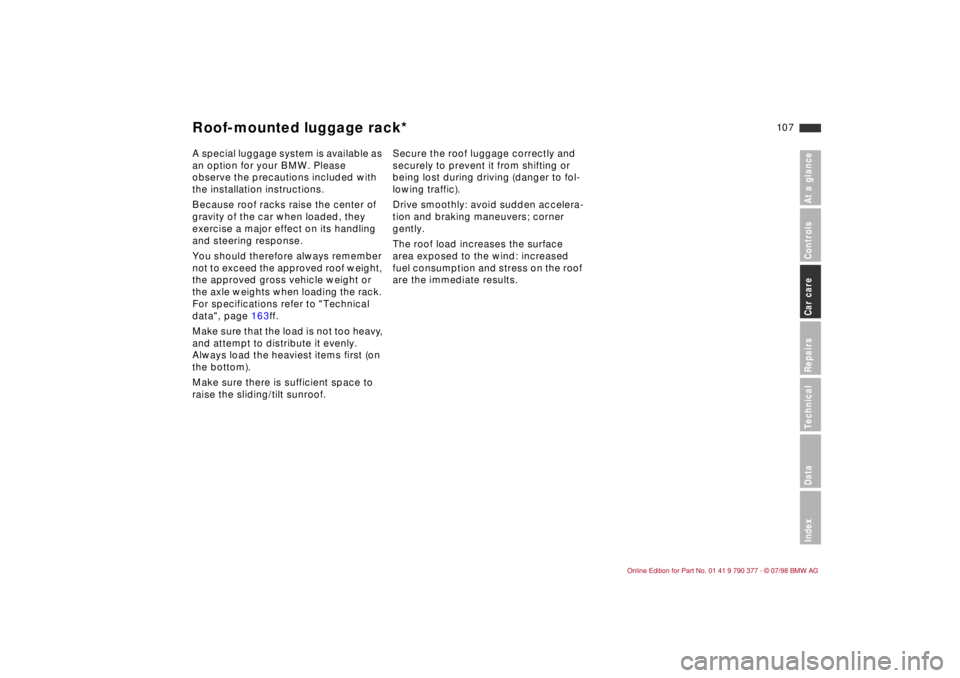
10 7
At a glanceControlsCar careRepairsTechnicalDataIndex
A special luggage system is available as
an option for your BMW. Please
observe the precautions included with
the installation instructions.
Because roof racks raise the center of
gravity of the car when loaded, they
exercise a major effect on its handling
and steering response.
You should therefore always remember
not to exceed the approved roof weight,
the approved gross vehicle weight or
the axle weights when loading the rack.
For specifications refer to "Technical
data", page 163ff.
Make sure that the load is not too heavy,
and attempt to distribute it evenly.
Always load the heaviest items first (on
the bottom).
Make sure there is sufficient space to
raise the sliding/tilt sunroof.Secure the roof luggage correctly and
securely to prevent it from shifting or
being lost during driving (danger to fol-
lowing traffic).
Drive smoothly: avoid sudden accelera-
tion and braking maneuvers; corner
gently.
The roof load increases the surface
area exposed to the wind: increased
fuel consumption and stress on the roof
are the immediate results.Roof-mounted luggage rack*
Page 109 of 179

10 8
The reception and sound quality
obtained from mobile radios varies
according to a variety of factors, includ-
ing the broadcast range of the transmit-
ter and the directional orientation of the
antenna.
Interference factors such as high-ten-
sion power lines, buildings and natural
obstructions can all lead to unavoidable
reception interference, regardless of
how well the vehicle's sound system is
operating.
Climatic factors such as intense solar
radiation, fog, rain and snow can also
interfere with reception.
Cellular telephones without ofÞcial BMW
approval can generate radio interfer-
ence. This is noticeable
e.g.,
as a low-
pitched hum in the loudspeakers.
Please refer to the supplementary oper-
ating instructions provided with your
sound system for detailed information
on its use.Mobile communications devices (mo-
bile phones, two-way radios, etc.) not
specifically designed for use in your car
may trigger malfunctions in other vehic-
ular systems. BMW can neither test nor
assume responsibility for every individ-
ual product being offered on the mar-
ket. We recommend that you consult
your BMW Retailer before purchasing
any device of this kind.
To ensure that your BMW continues to
provide reliable and trouble-free opera-
tion, refrain from using a cellular tele-
phone or other radio device with an
antenna located inside the passenger
compartment. The antenna should
always be mounted on the outside of
the vehicle.
b
Before loading the vehicle on a
train or driving it through a car-wash,
remove the antenna.c
Radio reception Cellular phones*
Page 110 of 179
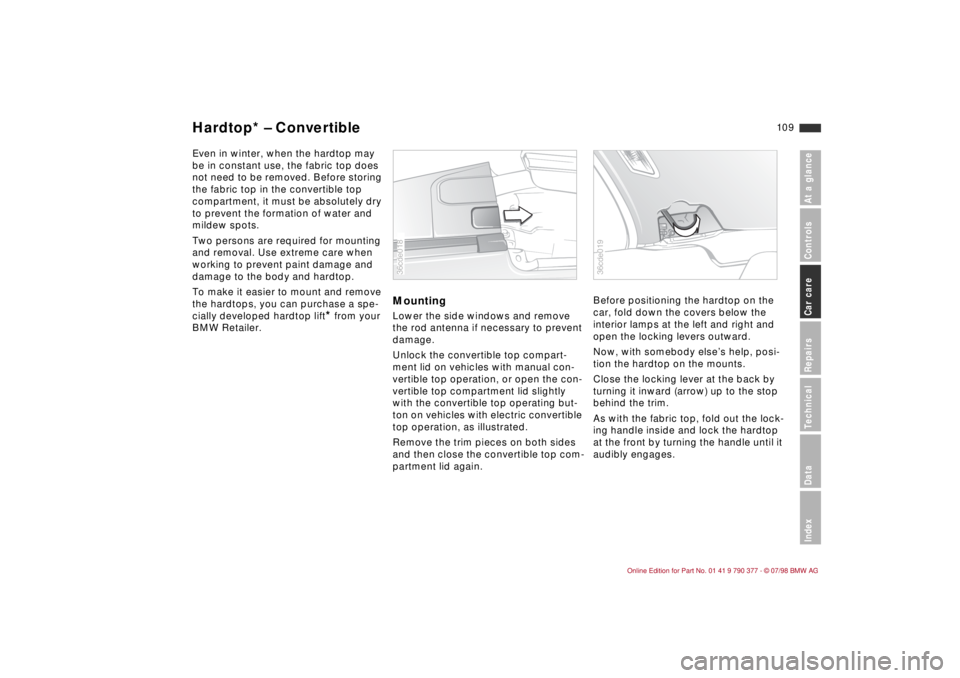
10 9
At a glanceControlsCar careRepairsTechnicalDataIndex
Even in winter, when the hardtop may
be in constant use, the fabric top does
not need to be removed. Before storing
the fabric top in the convertible top
compartment, it must be absolutely dry
to prevent the formation of water and
mildew spots.
Two persons are required for mounting
and removal. Use extreme care when
working to prevent paint damage and
damage to the body and hardtop.
To make it easier to mount and remove
the hardtops, you can purchase a spe-
cially developed hardtop lift
* from your
BMW Retailer.
MountingLower the side windows and remove
the rod antenna if necessary to prevent
damage.
Unlock the convertible top compart-
ment lid on vehicles with manual con-
vertible top operation, or open the con-
vertible top compartment lid slightly
with the convertible top operating but-
ton on vehicles with electric convertible
top operation, as illustrated.
Remove the trim pieces on both sides
and then close the convertible top com-
partment lid again.Before positioning the hardtop on the
car, fold down the covers below the
interior lamps at the left and right and
open the locking levers outward.
Now, with somebody elseÕs help, posi-
tion the hardtop on the mounts.
Close the locking lever at the back by
turning it inward (arrow) up to the stop
behind the trim.
As with the fabric top, fold out the lock-
ing handle inside and lock the hardtop
at the front by turning the handle until it
audibly engages.36cde018
36cde019
Hardtop* Ð Convertible
Page 111 of 179
11 0
a
Do not lift the hardtop by the seals.
Accidentally shifted or pulled-out seals
cause leaks.c
RemoveProceed as for mounting, however in
the reverse order.Any BMW Service station will gladly
provide information on the purpose of
technical modifications to the car, the
legal position and the manufacturer's
recommendations. For this purpose,
the Retailer requires the Vehicle Identi-
fication Number and, in some cases,
also the engine number.
Light-Emitting Diodes (LEDs)Control units, displays and other interior
equipment of your vehicle have LED's
behind protective lenses as a light
source. These LEDs resemble conven-
tional lasers and are classified by law as
"Class 1 light-emitting diodes".a
Do not remove the protective
lens and avoid staring directly at the
unfiltered beam for extended periods
(several hours), as inflammation of the
iris could result.c
Hardtop* Ð Convertible Technical modifications to the vehicle
Page 112 of 179
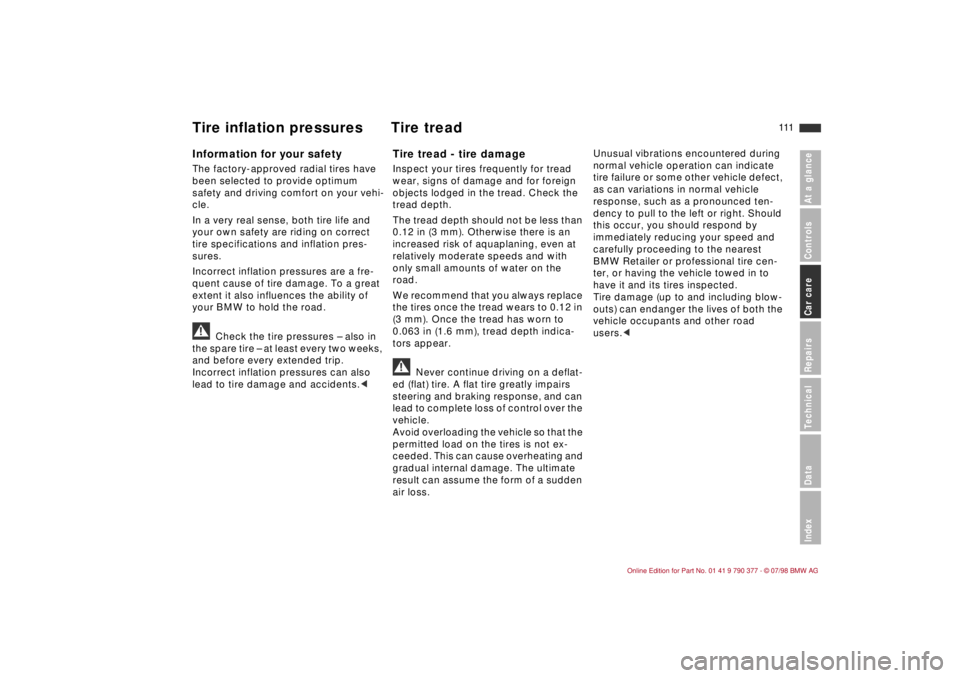
111
At a glanceControlsCar careRepairsTechnicalDataIndex
Information for your safetyThe factory-approved radial tires have
been selected to provide optimum
safety and driving comfort on your vehi-
cle.
In a very real sense, both tire life and
your own safety are riding on correct
tire specifications and inflation pres-
sures.
Incorrect inflation pressures are a fre-
quent cause of tire damage. To a great
extent it also influences the ability of
your BMW to hold the road.a
Check the tire pressures Ð also in
the spare tire Ð at least every two weeks,
and before every extended trip.
Incorrect inflation pressures can also
lead to tire damage and accidents.c
Tire tread - tire damageInspect your tires frequently for tread
wear, signs of damage and for foreign
objects lodged in the tread. Check the
tread depth.
The tread depth should not be less than
0.12 in (3 mm). Otherwise there is an
increased risk of aquaplaning, even at
relatively moderate speeds and with
only small amounts of water on the
road.
We recommend that you always replace
the tires once the tread wears to 0.12 in
(3 mm). Once the tread has worn to
0.063 in (1.6 mm), tread depth indica-
tors appear.a
Never continue driving on a deflat-
ed (flat) tire. A flat tire greatly impairs
steering and braking response, and can
lead to complete loss of control over the
vehicle.
Avoid overloading the vehicle so that the
permitted load on the tires is not ex-
ceeded. This can cause overheating and
gradual internal damage. The ultimate
result can assume the form of a sudden
air loss.Unusual vibrations encountered during
normal vehicle operation can indicate
tire failure or some other vehicle defect,
as can variations in normal vehicle
response, such as a pronounced ten-
dency to pull to the left or right. Should
this occur, you should respond by
immediately reducing your speed and
carefully proceeding to the nearest
BMW Retailer or professional tire cen-
ter, or having the vehicle towed in to
have it and its tires inspected.
Tire damage (up to and including blow-
outs) can endanger the lives of both the
vehicle occupants and other road
users.c
Tire inflation pressures Tire tread
 1
1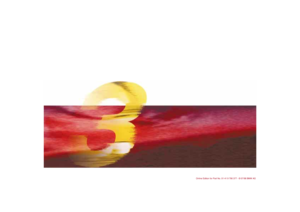 2
2 3
3 4
4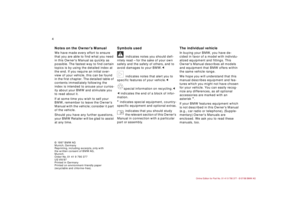 5
5 6
6 7
7 8
8 9
9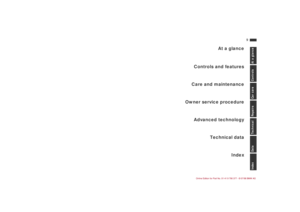 10
10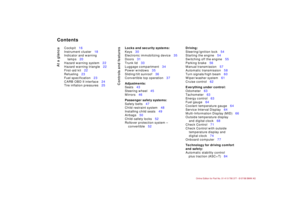 11
11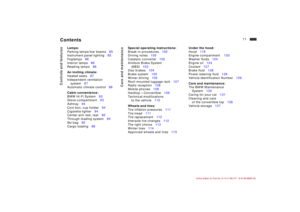 12
12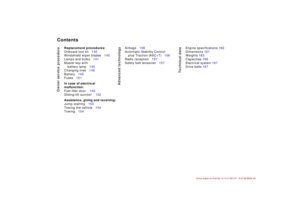 13
13 14
14 15
15 16
16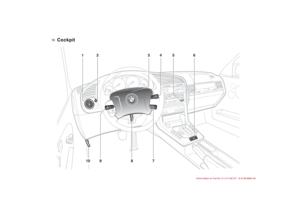 17
17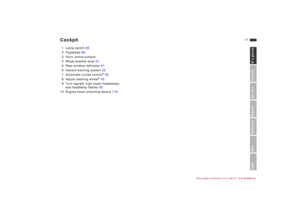 18
18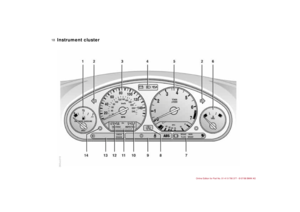 19
19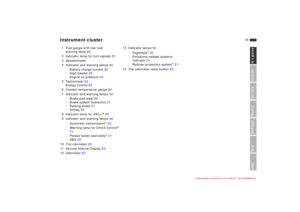 20
20 21
21 22
22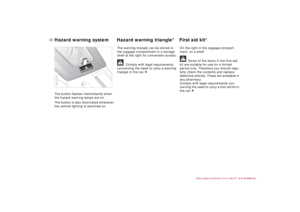 23
23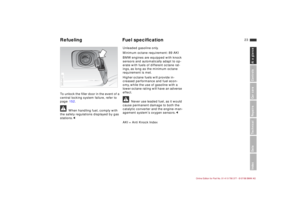 24
24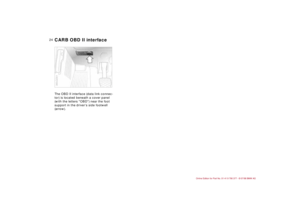 25
25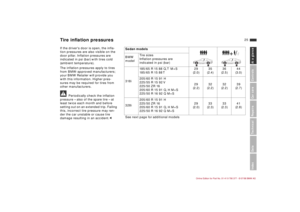 26
26 27
27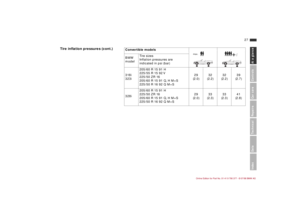 28
28 29
29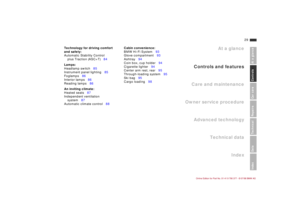 30
30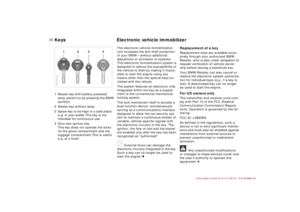 31
31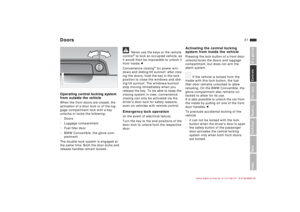 32
32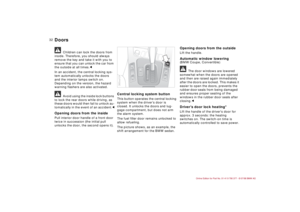 33
33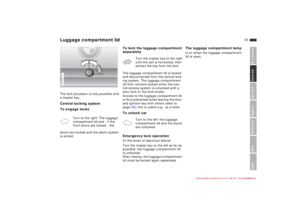 34
34 35
35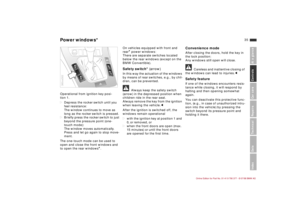 36
36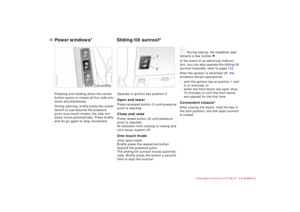 37
37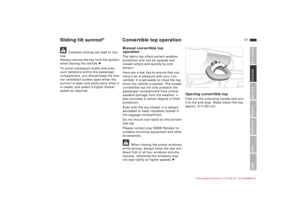 38
38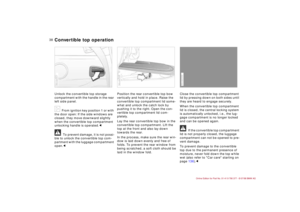 39
39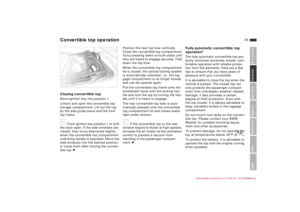 40
40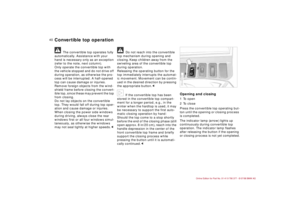 41
41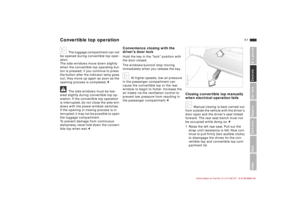 42
42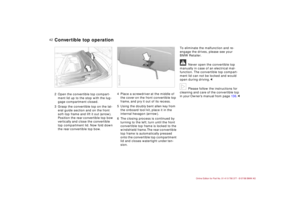 43
43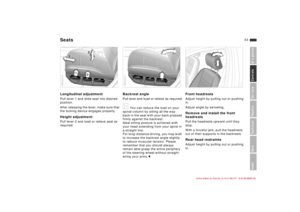 44
44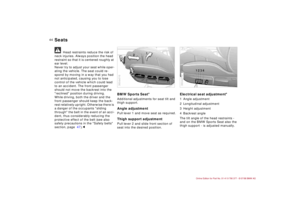 45
45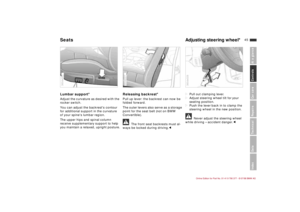 46
46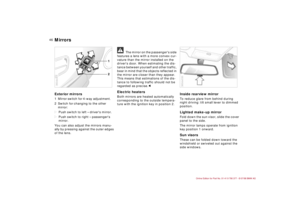 47
47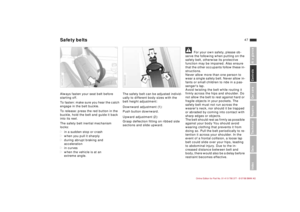 48
48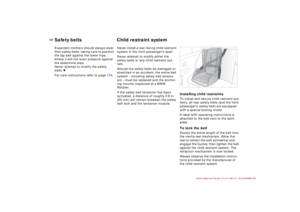 49
49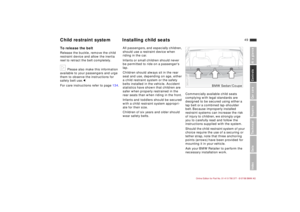 50
50 51
51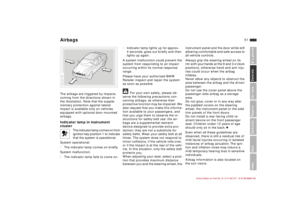 52
52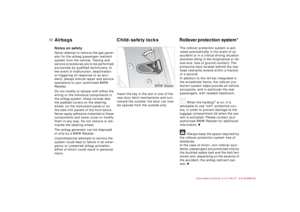 53
53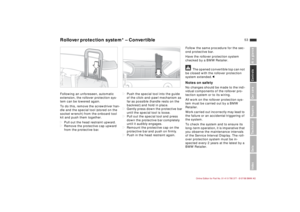 54
54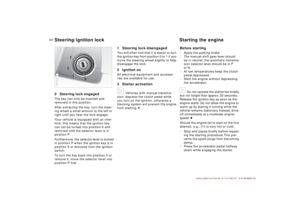 55
55 56
56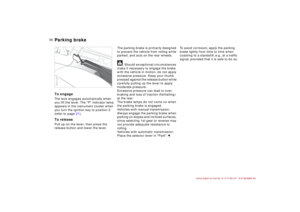 57
57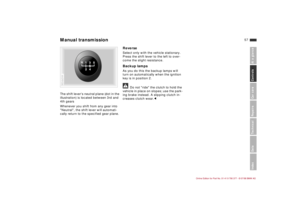 58
58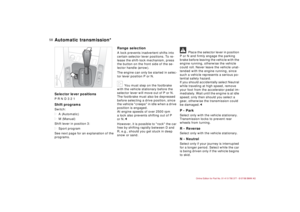 59
59 60
60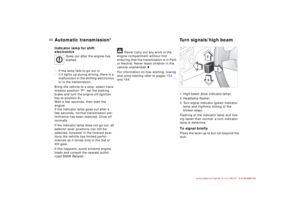 61
61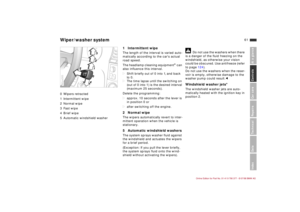 62
62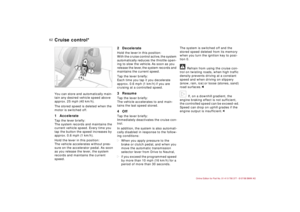 63
63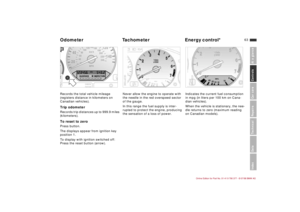 64
64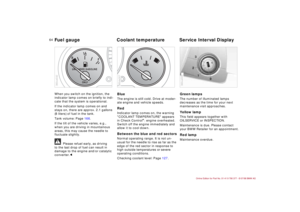 65
65 66
66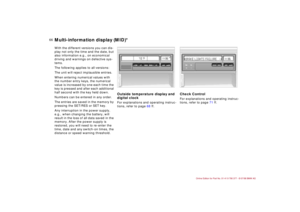 67
67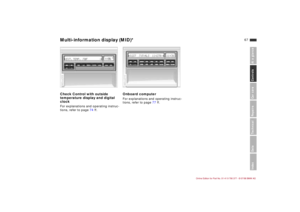 68
68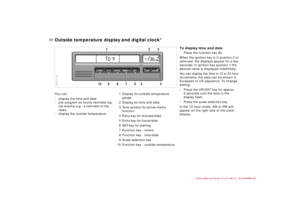 69
69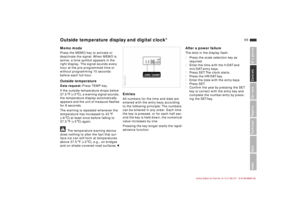 70
70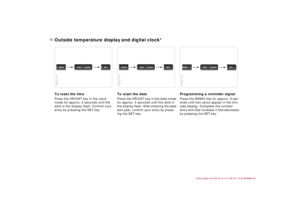 71
71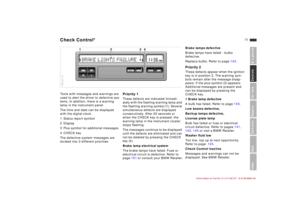 72
72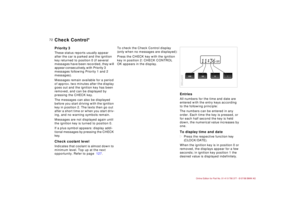 73
73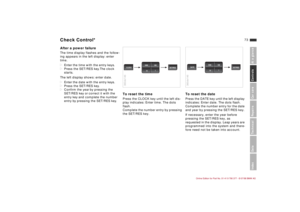 74
74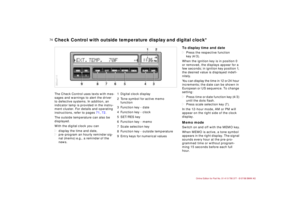 75
75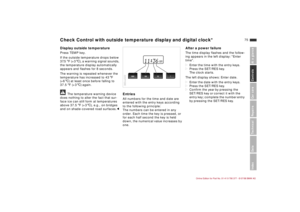 76
76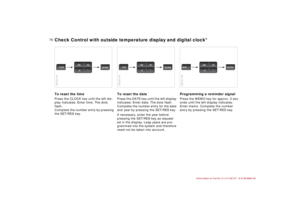 77
77 78
78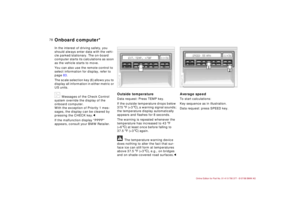 79
79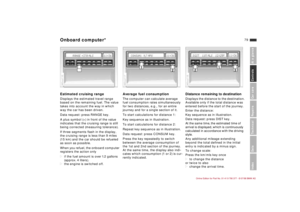 80
80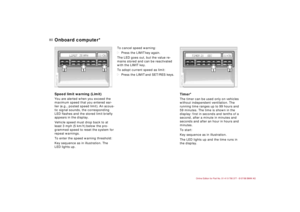 81
81 82
82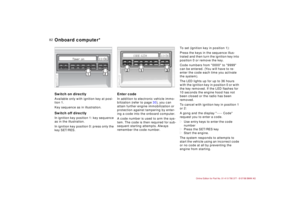 83
83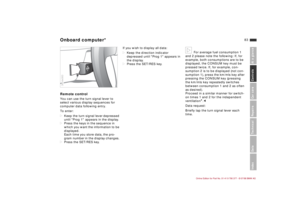 84
84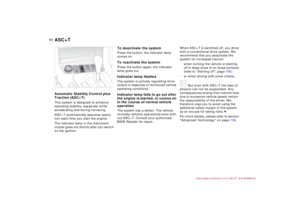 85
85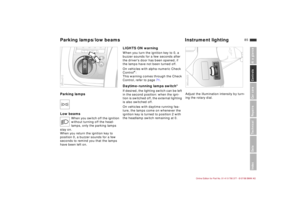 86
86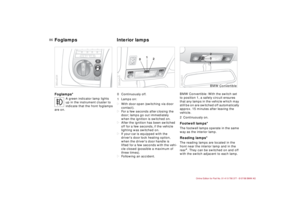 87
87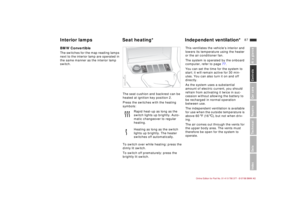 88
88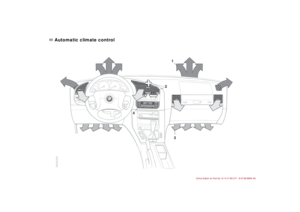 89
89 90
90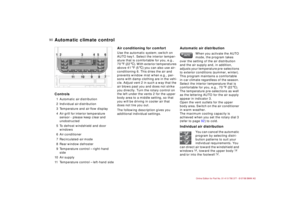 91
91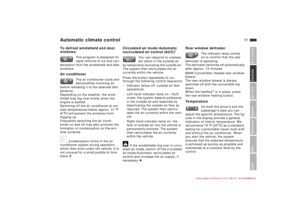 92
92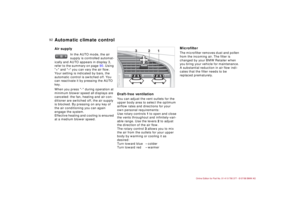 93
93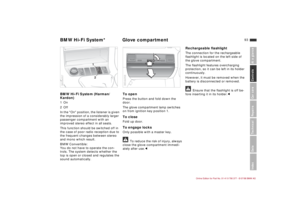 94
94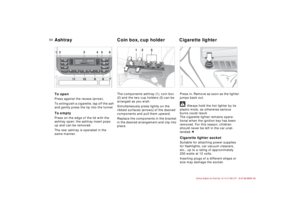 95
95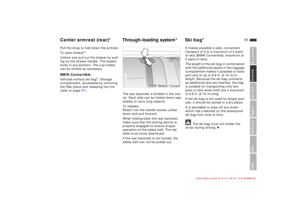 96
96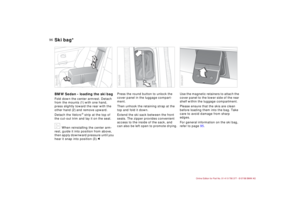 97
97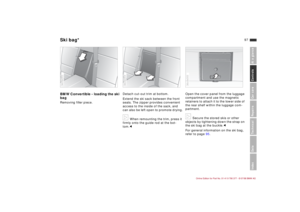 98
98 99
99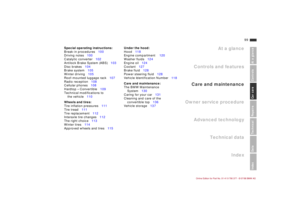 100
100 101
101 102
102 103
103 104
104 105
105 106
106 107
107 108
108 109
109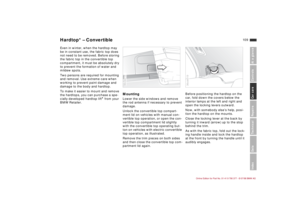 110
110 111
111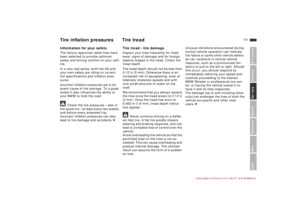 112
112 113
113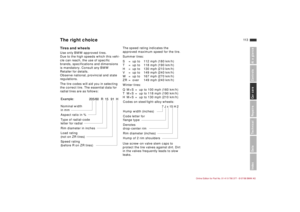 114
114 115
115 116
116 117
117 118
118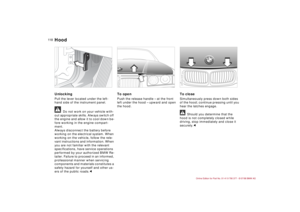 119
119 120
120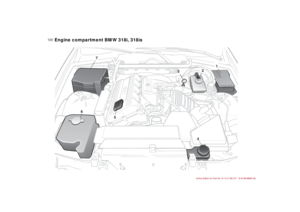 121
121 122
122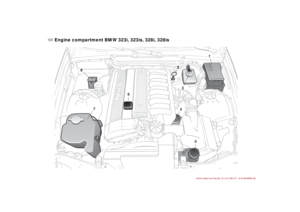 123
123 124
124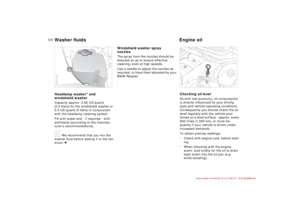 125
125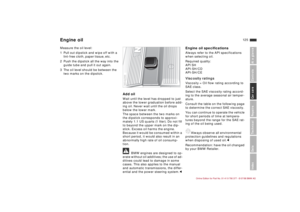 126
126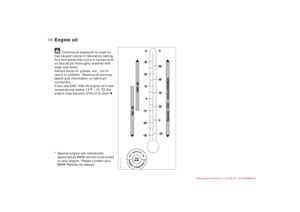 127
127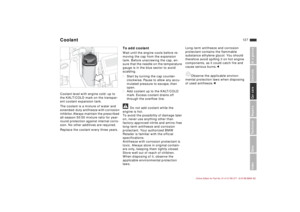 128
128 129
129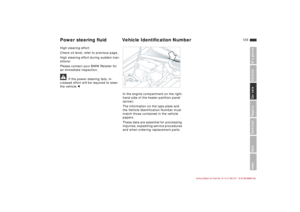 130
130 131
131 132
132 133
133 134
134 135
135 136
136 137
137 138
138 139
139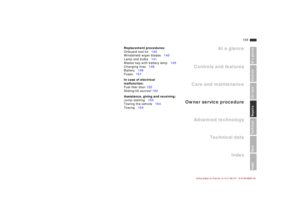 140
140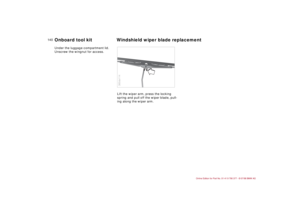 141
141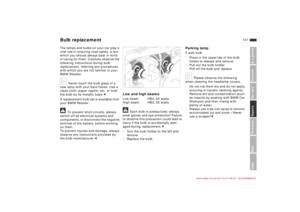 142
142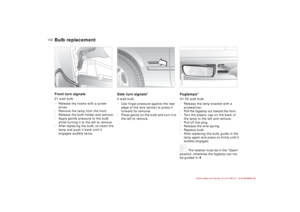 143
143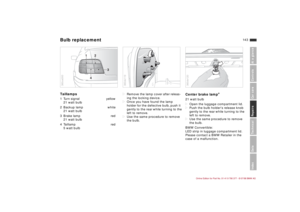 144
144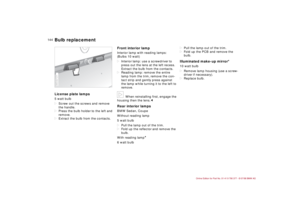 145
145 146
146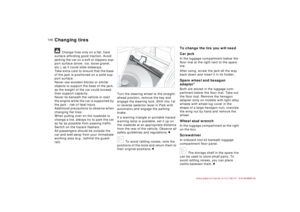 147
147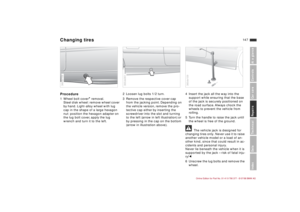 148
148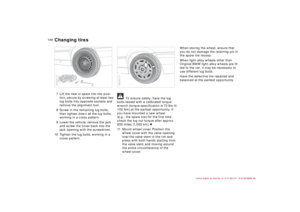 149
149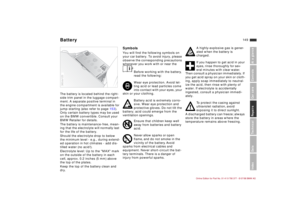 150
150 151
151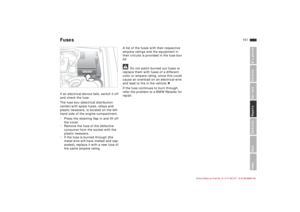 152
152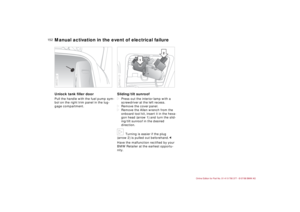 153
153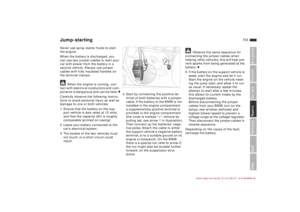 154
154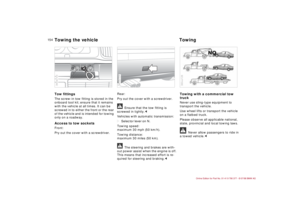 155
155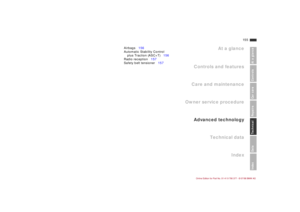 156
156 157
157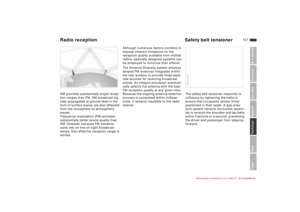 158
158 159
159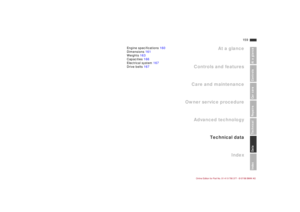 160
160 161
161 162
162 163
163 164
164 165
165 166
166 167
167 168
168 169
169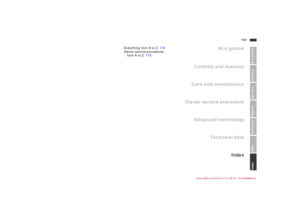 170
170 171
171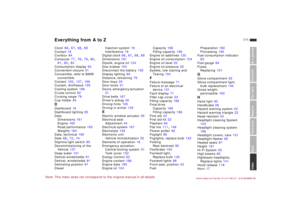 172
172 173
173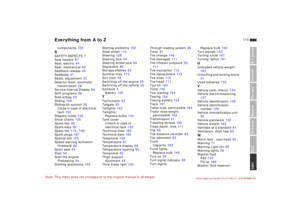 174
174 175
175 176
176 177
177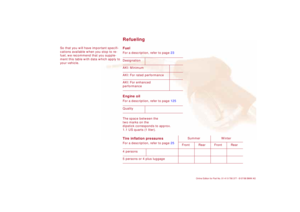 178
178






